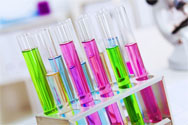您的位置:首页 > 产品中心 > Fungal DNA standard from Aspergillus fumigatus
Fungal DNA standard from Aspergillus fumigatus
产品性质
| Quality Level【质量水平】 | 200 |
| form【形式】 | liquid |
| concentration【浓度】 | 10 ng/μL |
| shipped in【运输】 | ambient |
| storage temp.【储存温度】 | −20℃ |
基本信息
| General description【一般描述】 | Standardization of sample analysis is essential in microbiome genomics research workflow. Lack of standardization can lead to biases and errors in common processes during sample preparation and analysis such as sample amplification, sequencing, and bioinformatics analyses.1 The human microbiome includes not only bacteria, but also viruses and fungi. While the “bacteriome” field has been researched extensively in the past years, fungi, comprising the “mycobiome”, remain relatively neglected. Fungi and yeasts have been shown to be involved in illness conditions such as cancer and gastrointestinal disease. The human gut is populated by three fungal phyla, Ascomycota, Basidiomycota, and Zygomycota. The fungal microbial genomic DNA standard from Aspergillus fumigatus can serve as standard for benchmarking the performance along the workflow of microbiome research and metagenomic analyses, as well as a tool to increase reproducibility and allow comparison of results obtained by different labs. Aspergillus fumigatus is an ubiquitous saprotroph fungus belonging to Ascomycota. Aspergillus fumigatus spores can induce allergic airways response after antibiotic treatment2. With increases in the number of immunosuppressed patients, there has been a dramatic increase in severe and usually fatal invasive aspergillosis, caused by the conidia of Aspergillus species. Aspergillosis is now the most common mold infection worldwide.3 The genomic DNA is provided at ≥10 ng/μL concentration in TE buffer pH 8.0. It is recommended to avoid freeze thaw cycles with this product. |
| Application【应用】 | Suitable as a standard for PCR, Sanger and next generation sequencing (NGS). |
| Features and Benefits【特点和优势】 |
|
| Physical form【外形】 | Liquid -The genomic DNA is provided at ≥10 ng/μl concentration in TE buffer pH 8.0 |




